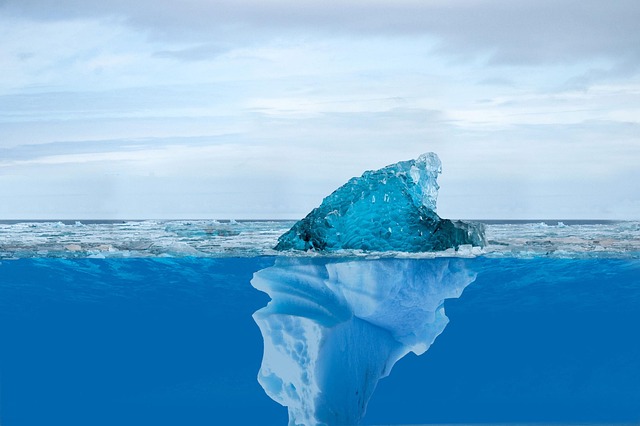Ice Therapy for Arthritis: Natural Relief for Joint Pain

Arthritis and joint pain significantly impair daily life, caused by age, autoimmune responses or con…….
Introduction
Joint pain is a debilitating condition that affects millions worldwide, leading to reduced mobility and quality of life. Cold therapy, a non-invasive treatment method used to manage joint pain and inflammation, has garnered significant attention due to its effectiveness and accessibility. This comprehensive article delves into the multifaceted world of cold therapy for joint pain, exploring its application, benefits, and the global impact it has on health and well-being. Readers will gain a deep understanding of how cold therapy fits within the broader landscape of pain management and learn about the latest advancements, economic considerations, and policy frameworks shaping its future.
Understanding Cold Therapy for Joint Pain
Cold therapy, also known as cryotherapy, involves the application of cold temperatures to injured or painful joints to reduce inflammation, pain, and swelling. The treatment can be administered in various forms, including ice packs, gel packs, cold whirlpool baths, and specialized machines that produce a stream of vaporized liquid nitrogen. Its historical context dates back to ancient civilizations, where cold substances were used for healing purposes. Today, it is a cornerstone in rehabilitation and pain management practices.
Global Impact and Trends
The impact of cold therapy for joint pain is global, with its use transcending geographical and cultural boundaries. In regions like North America and Europe, it is widely accepted as part of standard care protocols. Conversely, in developing countries, access to advanced cold therapy treatments may be limited, yet traditional methods utilizing natural cold sources remain prevalent. Global trends indicate a growing emphasis on preventative healthcare and the management of chronic conditions, both of which are bolstered by the adoption of cold therapy.
Economic Considerations
The economic implications of cold therapy for joint pain are significant. It represents a substantial market within the broader healthcare industry, with investments in research, development, and application driving innovation. In terms of economic systems, cold therapy plays a dual role: it is both a cost center due to its treatment-related expenses and a cost saver by potentially reducing the need for more invasive procedures or long-term pharmaceutical interventions. The market dynamics are influenced by factors such as technological advancements, insurance coverage, and patient demographics.
Technological Advancements
Technological advancements have revolutionized cold therapy, leading to more efficient, precise, and user-friendly applications. Innovations like controlled cryotherapy chambers, targeted cold therapy devices, and advanced cryo-therapeutic equipment have enhanced the treatment’s efficacy. These technologies are not only improving patient outcomes but also expanding the accessibility of this treatment option globally. The future potential includes personalized cold therapy regimens, remote monitoring capabilities, and integration with wearable technology for continuous pain management.
Policy and Regulation
Policies and regulations play a crucial role in shaping the application and availability of cold therapy for joint pain. At the international level, guidelines from organizations like the World Health Organization (WHO) influence how cold therapy is used globally. National healthcare systems establish protocols and reimbursement policies that dictate the extent to which patients can access these treatments. Regulatory frameworks ensure safety and efficacy, while also fostering innovation through clinical trial approvals and patent law compliance.
Challenges and Criticisms
Despite its widespread use, cold therapy for joint pain faces challenges and criticisms. Concerns about the proper administration of cold therapy, potential side effects, and the lack of standardized protocols across different healthcare systems are prevalent. Additionally, there is a need for more comprehensive research to address gaps in understanding its long-term effects on various populations. Solutions to these issues include improved training for healthcare providers, establishment of universally accepted guidelines, and increased investment in research.
Case Studies
Several case studies highlight the successful application of cold therapy for joint pain across different settings. For instance, a professional athlete recovering from an injury may use targeted cold therapy to manage post-exercise inflammation. Another case study might involve a geriatric patient with osteoarthritis who experiences improved mobility after incorporating regular cold therapy sessions into their care plan. These real-world examples underscore the versatility and efficacy of cold therapy in various clinical scenarios.
Future Prospects
Looking ahead, the future prospects for cold therapy in managing joint pain are promising. Potential growth areas include increased personalization of treatment plans, integration with digital health technologies, and broader access to cryotherapy treatments globally. Emerging trends suggest a shift towards more preventative and home-based care, where cold therapy plays a pivotal role. Strategic considerations for stakeholders involve maintaining the balance between innovation and evidence-based practice to ensure optimal patient outcomes.
Conclusion
In conclusion, cold therapy for joint pain is a vital component of modern pain management strategies. Its ability to alleviate pain and inflammation, coupled with its non-invasive nature, makes it an invaluable treatment option. The global impact, economic considerations, technological advancements, policy frameworks, and future prospects all contribute to a comprehensive understanding of how cold therapy fits within the broader landscape of healthcare. As research continues and best practices evolve, cold therapy is poised to remain a cornerstone in the management of joint pain worldwide.
FAQs
What exactly is cryotherapy, and how does it work for joint pain?
Cryotherapy involves exposing the body or specific body parts to extremely low temperatures for a short period. It works by reducing inflammation, decreasing nerve conduction velocity, and restricting blood flow to reduce swelling and pain in the affected joint(s).
Is cold therapy effective for all types of joint pain?
While cold therapy is effective for acute injuries and inflammatory conditions like arthritis, its effectiveness can vary depending on the underlying cause of the joint pain. It is most effective for conditions characterized by inflammation or recent injury.
Are there any side effects associated with cold therapy?
Side effects are generally mild and temporary, including skin irritation or frostbite if the treatment is administered improperly. However, when used as directed, cold therapy is considered safe for most individuals.
Who should not use cold therapy for joint pain?
Individuals with circulatory problems, raynaud’s disease, or certain vascular conditions should avoid cold therapy without medical supervision. People with acute skin wounds over the area to be treated should also exercise caution.
How does the cost of cold therapy compare to other treatments for joint pain?
The cost of cold therapy can vary depending on the type of treatment (e.g., at-home vs. clinical settings) and insurance coverage. Generally, it is a cost-effective option compared to more invasive procedures like surgery or long-term pharmaceutical interventions.
What is the role of technology in advancing cold therapy treatments?
Technology plays a significant role by enabling more precise application of cold, enhancing patient monitoring, and allowing for remote treatment management. This advancement improves the overall efficacy and accessibility of cold therapy.
Can cold therapy be used in conjunction with other treatments for joint pain?
Yes, cold therapy is often used as part of a comprehensive treatment plan that may include physical therapy, medication, and lifestyle modifications to achieve the best outcomes.
What are some future trends in cold therapy for joint pain?
Future trends include personalized cold therapy protocols tailored to individual patient needs, integration with digital health platforms for better monitoring and management of joint conditions, and the potential for cold therapy to be administered orally or through topical applications.
This comprehensive guide provides a holistic view of cold therapy for joint pain, addressing its mechanisms, global impact, economic considerations, technological advancements, policy frameworks, challenges, case studies, and future prospects. It serves as an informative resource for patients, healthcare providers, and policymakers alike.

Arthritis and joint pain significantly impair daily life, caused by age, autoimmune responses or con…….

Joint pain, a prevalent global issue, significantly impairs mobility and quality of life due to caus…….

Cryotherapy, leveraging extreme cold for non-invasive treatment, effectively alleviates joint pain a…….

Ice therapy for arthritis is an effective, non-invasive treatment method recommended by healthcare p…….

Cold water immersion (cold therapy) effectively manages chronic joint pain by reducing inflammation…….

Cold therapy, using cryotherapy, effectively targets joint pain in knees, shoulders, and elbows by r…….

Joint stiffness significantly impairs mobility and quality of life, but cold compresses offer effect…….

Ice therapy for arthritis is a powerful, non-pharmaceutical tool offering significant pain and infla…….

Post-workout joint soreness arises from micro-tears in muscle fibers and soft tissues, leading to in…….